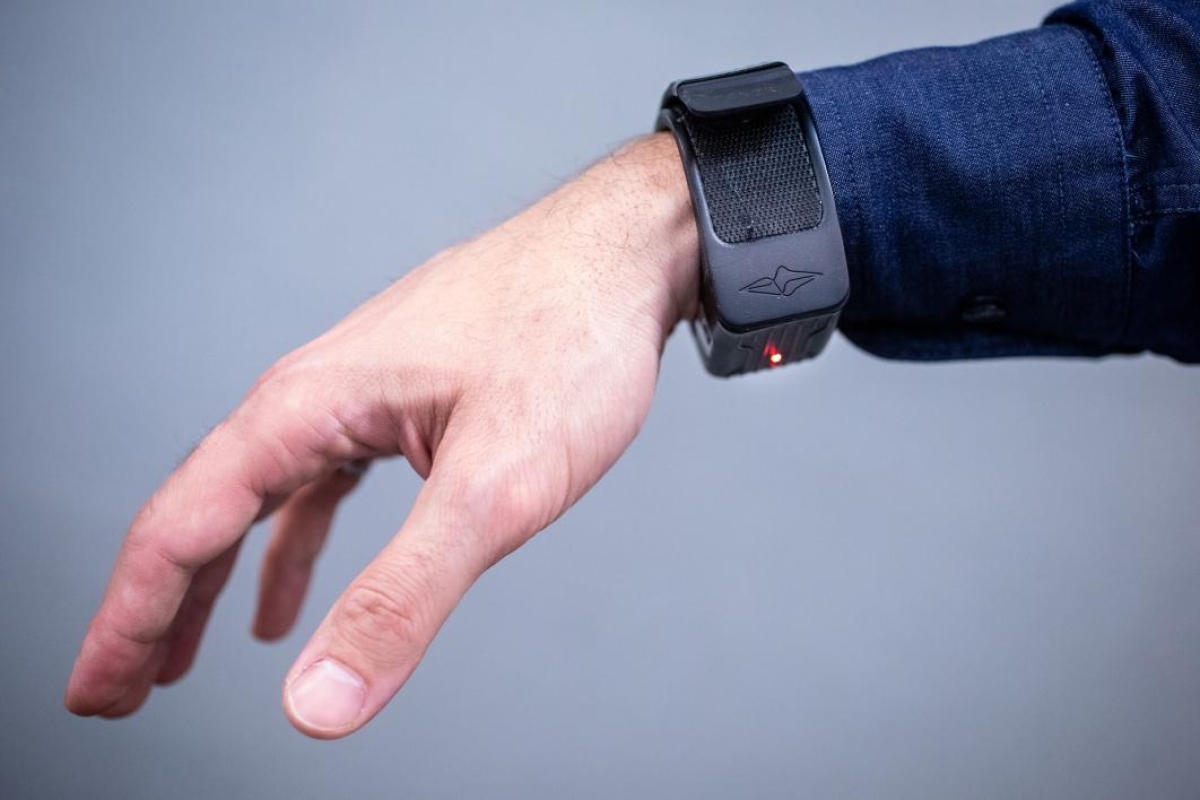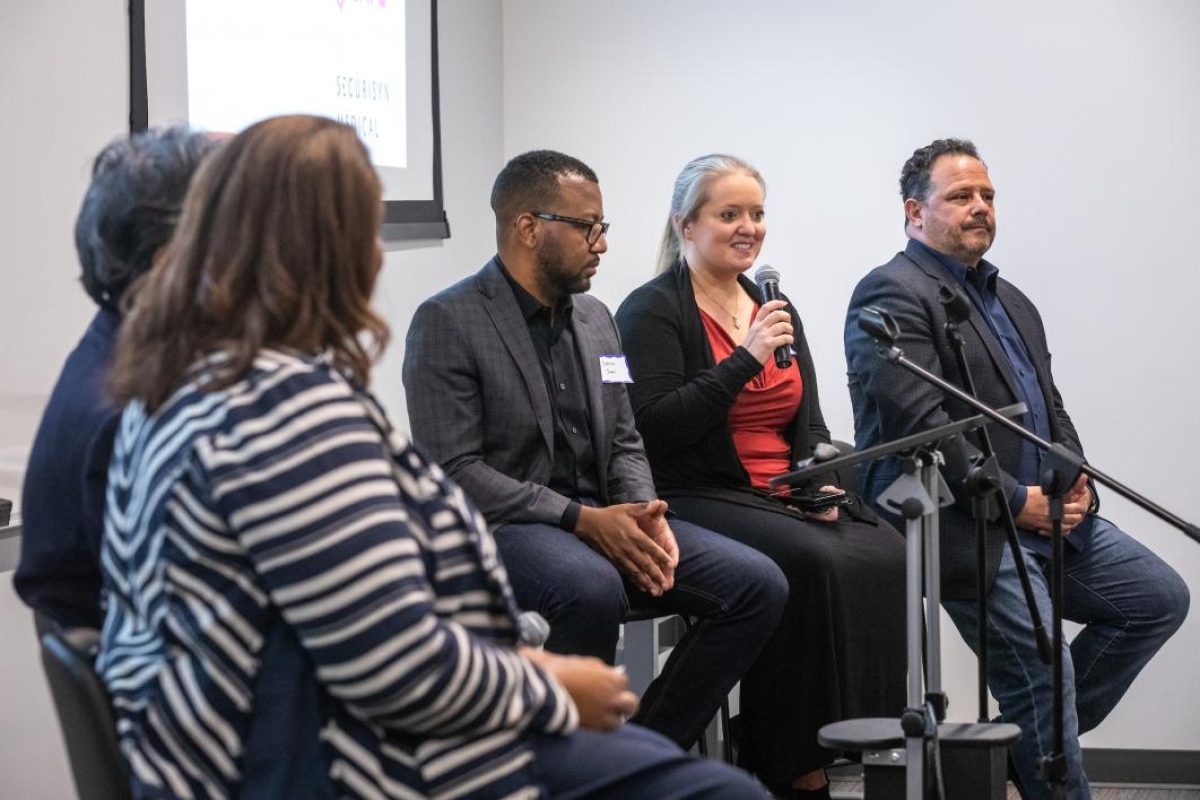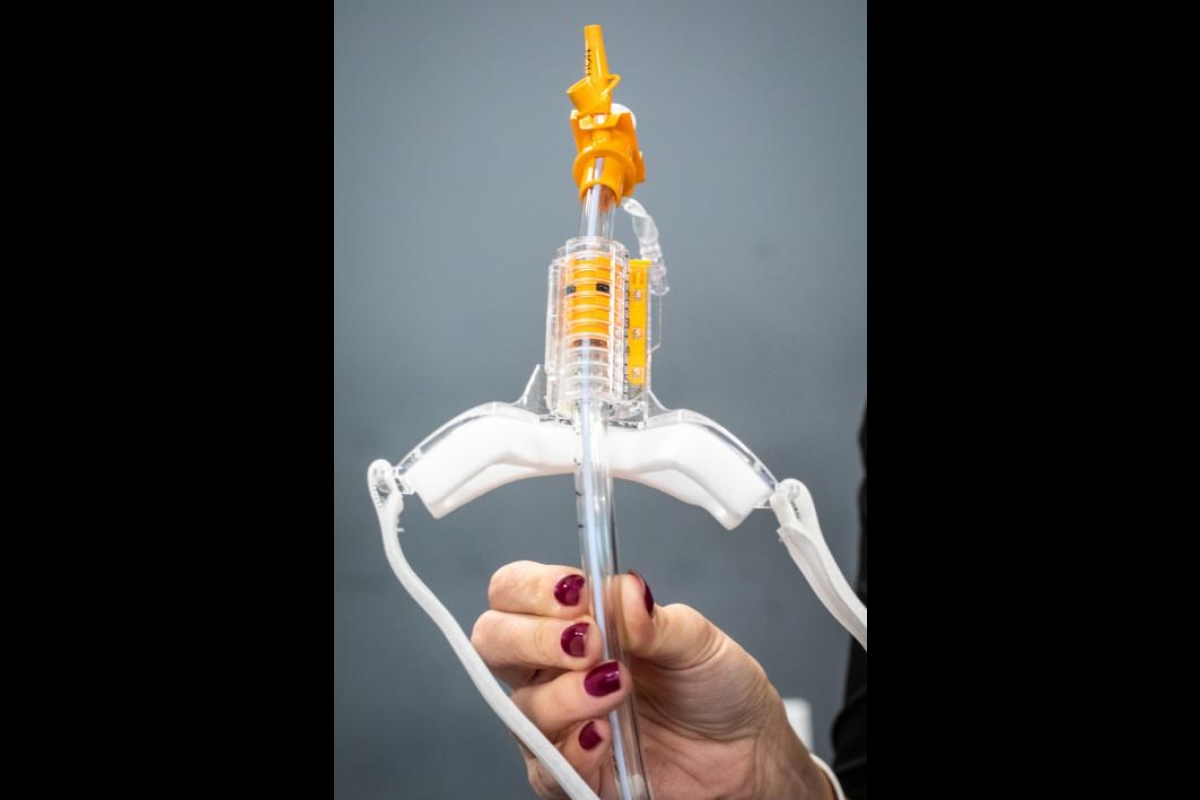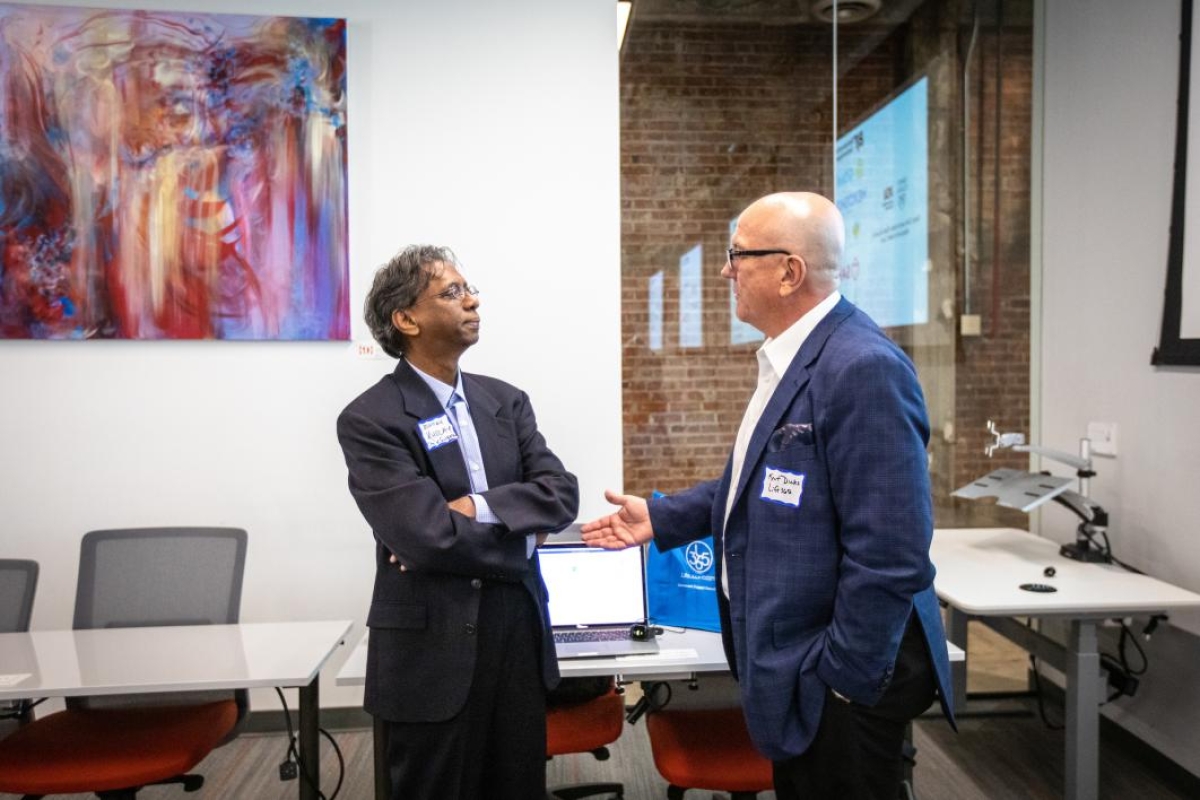Mayo Clinic and ASU MedTech Accelerator's first cohort gets expert insights and industry knowledge
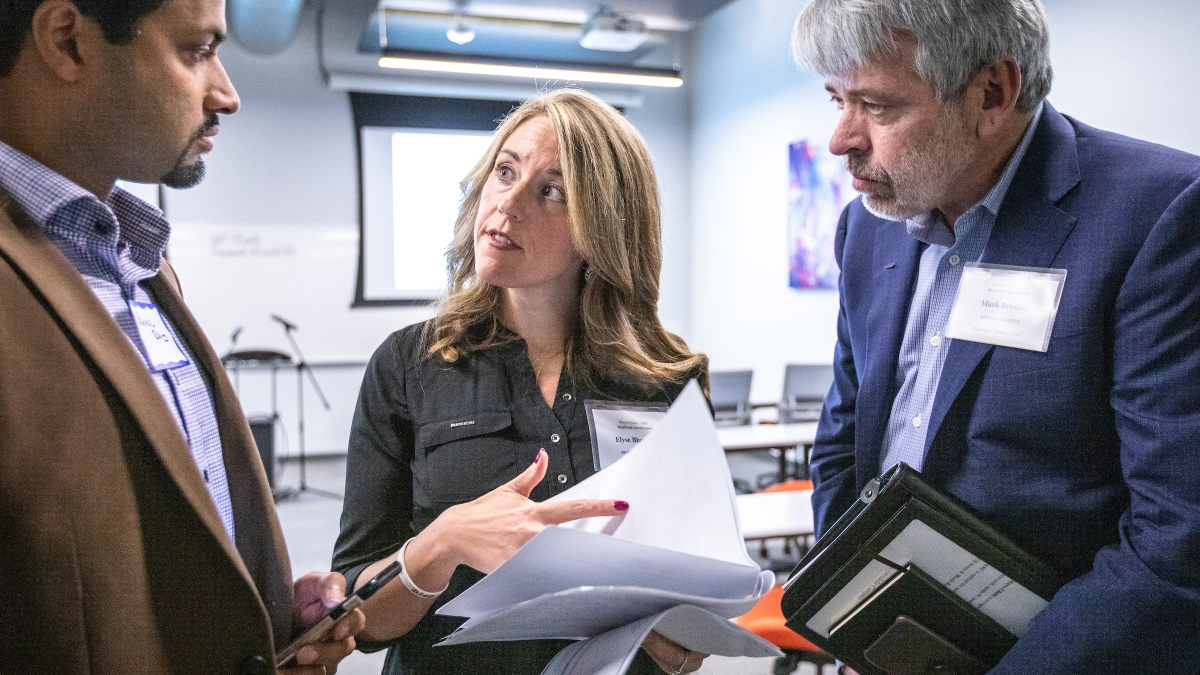
Editor's note: This story is being highlighted in ASU Now's year in review. Read more top stories from 2019.
An interlocking breathing tube that prevents death by accidental removal. An app that provides peace of mind concerning your sexual health. A wearable health-monitoring device that tracks movement in real time to expedite healing and prevent further wrist injuries.
These are just a few of the novel ideas coming out of the Mayo Clinic and ASU MedTech Accelerator, a collaboration between Mayo Clinic and Arizona State University designed specifically to provide early-stage medical device and health care technology companies with personalized business development plans and collaborative opportunities to accelerate go-to-market and investment possibilities.
The program began accepting applications back in January and held its official launch April 22 at Mayo Clinic in Scottsdale, where the six companies chosen to participate in the first cohort presented their elevator pitches to a room full of Mayo and ASU personnel.
“Those of you who know about ASU know that we’re the No. 1 university in innovation in the country. So to be partnering with the No. 1 hospital to collaborate on medical innovation is very exciting for us,” Rick Hall — the program’s co-managing partner of the accelerator and ASU Edson College of Nursing and Health Innovation clinical professor — said before introducing the participants.
The event also served to kick off the accelerator’s two-week immersion program, in which participants spent 10 days immersed in the ASU and Mayo Clinic ecosystems, learning directly from subject matter experts about such topics as human-centered design, FDA regulation and reimbursement strategy. In addition, each afternoon, participants had time to meet with mentors to identify potential collaborators.
“One of the key differentiators of the Mayo Clinic and ASU MedTech Accelerator is its extensive access to experts and focus on business development; participants interacted with 60 mentors and experts on average during a two-week immersion”, said Timmeko Love, Mayo Clinic’s co-managing partner of the accelerator.
In total, the accelerator will last six–12 months, depending on the unique development plan for each participant, with incentives offered to participants to stay and work in Arizona. Of the companies in the inaugural cohort, one is local to the Valley, two hail from Canada and three are based in U.S. cities from San Francisco to Highlands Ranch, Colorado.
April 25 was designated as “Community Day.” Participants gathered that afternoon at Galvanize, a tech-focused coworking space in downtown Phoenix, to network and hear from a panel of leaders from the greater Phoenix startup ecosystem — including Christie Kerner, StartupAZ Foundation director of venture development; Brad Halvorsen, Flinn Foundation executive vice president; and Darryn Jones, Greater Phoenix Economic Council vice president of emerging technologies.
The panel, which was organized and moderated by Love, shared invaluable advice and industry knowledge specific to the Phoenix area, such as the ease of attracting talent and the supportive entrepreneurial culture.
“Companies can start here, but they can also scale here,” Jones assured the participants.
Life365, a digital health remote patient-monitoring company, is one of three companies that cohort member Kent Dicks has founded in the Phoenix area.
An ASU alumnus, Dicks was blunt about why he thinks the Valley is a great place for startups. Not only is it a supportive environment, it’s cheaper than other startup cities and “if you want media attention, you can fight (for it) with 500 people in the Bay Area or 10 people in Arizona,” he said.
Elyse Blazevich, COO and CFO of Securisyn Medical, was impressed with the access the accelerator afforded her team in such a short time.
“We’ve been here less than a week and already the doors that have been opened to us to some of the world’s best and brightest is incredible,” she said.
Securisyn Medical hopes to reduce the incidence of unplanned extubation — the accidental removal of a breathing tube — with the world’s first integrated tube stabilization system that utilizes an interlocking design to ensure the tube doesn’t slip out.
Every year in the United States, unplanned extubation causes 33,000 preventable deaths.
“If you don’t have an airway, you don’t have a patient,” Blazevich said.
President and CTO of BioInteractive Technologies Gautam Sadarangani got into the biomedical space after losing 150 pounds in college with the help of a wearable health monitor. His company’s take on the technology, a wristband called TENZR, seeks to empower the roughly 20 million people in North America who suffer from RSI (repetitive strain injury) in their wrists and hands by tracking movement in real time and relaying the information to a physician who can suggest therapies and better track a patient’s progress and adherence to recommendations.
BioInteractive Technologies is currently based in Canada, but Sadarangani said the company wouldn’t rule out the possibility of expansion in the Valley.
“We’ve been extremely impressed with the ecosystem here, the access to talent and the significant amount of venture capital,” he said.
The Mayo Clinic and ASU MedTech Accelerator will soon start accepting applications for the next two-week immersion program, to take place in Scottsdale, Arizona.
The complete list of spring 2019 participants
BioInteractive Technologies: TENZR
Lukas-Karim Merhi, CEO, and Gautam Sadarangani, CTO
TENZR, a patent-pending wristband that detects the use of the hand, helps people that have suffered from a hand injury regain the use of their hand faster and more effectively.
GYANT
Pascal Zuta, CEO
GYANT offers a suite of asynchronous virtual-care solutions that allows health care providers to increase patient satisfaction scores, reduce costs and aid the health care workforce via point-of-care solutions.
HEXOSKIN
Pierre-Alexandre Fournier, CEO
Hexoskin offers a line of smart clothes that incorporate body sensors into comfortable garments for precise health tracking.
Life365
Kent Dicks, CEO
Life365 is a digital health infrastructure development and solution delivery company that provides software for patients to remotely interface with physicians.
SAFE
Ken Mayer, founder and CEO
SAFE leverages digital technology to provide a virtual health care platform and provider network that empowers patients to consult with sexual health specialists, find and book STD testing and access a trusted source for clinical information.
Securisyn Medical
Elyse Blazevich, COO and CFO, and Mark Bruning, president and CEO
Securisyn Medical hopes to reduce the incidence of unplanned extubation with a tube stabilization system that utilizes an interlocking design to ensure the tube doesn’t slip out.
Top photo: Elyse Blazevich and Mark Bruning (right) executives with Securisyn Medical from the Denver area, talk with Rahul Rao of Desert Platforms medical device consultancy at the ASU/Mayo MedTech Accelerator's Community Day on April 25 at the Galvanize coworking space in downtown Phoenix. Securisyn is taking its tracheal intubation device through the FDA approval process and is hoping to begin testing on living subjects very soon. Photo by Charlie Leight/ASU Now
More Health and medicine
Leading the way in wellness: ASU highlighted in The Princeton Review's 2025 Mental Health Services Honor Roll
Being a college student isn’t easy — navigating new routines, people and places can be a challenge, especially if the right support system is not in place. That's why Arizona State University is a…
New Indigenous health dashboard offers robust database for scholars
By Nicole Greason and Kimberly Linn A team at Arizona State University’s College of Health Solutions and American Indian Studies program has created a new tool to aid researchers…
College of Health Solutions program doing its part during Salute to Service
It wasn’t always easy for Marine veteran Chuck Hale when he first returned to civilian life. But he’ll never forget the help he received from a fellow former service member.“The first vet that helped…
